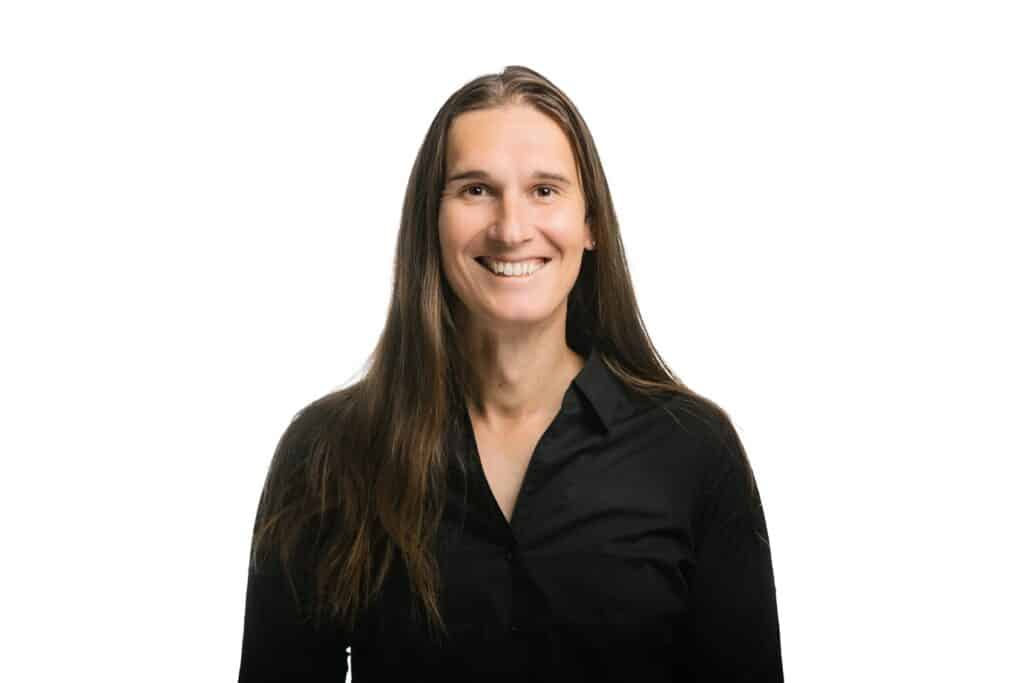Internationally experienced aerospace engineer Dr Joni Sytsma is driving an entire country’s space direction, all while ensuring diverse talent has room to grow and thrive.
“A lot of what I talk researchers and founders through is understanding where their technology could have the biggest earth-born impact and outcome,” she says.
“I really believe with business you have to dream big from the get-go to achieve any chance of success.”
As Chief Technology Officer of the iLAuNCH program, Dr Sytsma manages Australia’s $180 million space program, leading the technology development of numerous space and aerospace projects that will take flight in the coming years.
With 17 years of successful research and development experience exploring complex aerospace systems already behind her, the iLAuNCH program is the largest Dr Sytsma has managed in her career thus far.

Using her own professional success to support the next generation of female and female-presenting researchers, Dr Sytsma is also a mentor for CSIRO’s ON Prime, a free program designed to help research teams of two to five people take their projects to the next level through customer discovery activities and more.
“What I really do is talk to these businesses from a lived experience perspective on how to get their technology into the market,” says Dr Sytsma, adding that she pushes her mentees to “find those market opportunities” and match themselves up with the right customers to bring their research to life.
“It’s useful because a lot of the ON Program participants– they’re active researchers – a lot of them are early career researchers trying to find a way, and what I try and do is push them towards the best possible avenue for growth.”.”
This support from mentors like Sytsma is critical as female innovators navigate a professional deep tech world that’s historically placed barriers in the way of their career progression. Restricted access to research, funding and mentorship are just a few of these traditional disadvantages.
Advocating for all areas of diversity in deep tech
Beyond her technical prowess, Dr Sytsma is a proud trans person and is passionate about supporting the LGBTQIA+ community to fly high in the tech and space sector.
She believes efforts to ensure diversity in the workplace must start from the top, which includes making young queer employees feel as comfortable and supported as possible as they enter any organisation early on in their careers.
“When young folk enter an organisation they’re at the bottom of the totem pole, and who’s at the top is the leader,” Dr Sytsma says, adding that “if the leader sets a good drumbeat favourable to diversity and inclusion, it’s going to make the overall working experience better for the young queer folk and anybody else that you’re wanting to hire.”
As a young queer professional in tech at one point in her own career, Dr Sytsma is no stranger to overcoming challenges, and unfortunately says she’s “had the displeasure of knowing so many human barriers”. Noting that this experience “extends across the board for all different reasons.”
Originating from the USA, Dr Sytsma says she “had to fight really hard to get seconded to Australia” and “managed to sidestep all the barriers in that process”.
“Once I was here, staying was very challenging,” she adds, although thankfully, in May 2022, she became an Australian citizen and has continued her commitment to building local, innovative technologies.
Reflecting on her journey and the obstacles she’s overcome, Dr Sytsma acknowledges that “there will always be things that get in the way of what we’re trying to do and where we’re trying to go,” but she has “kept on walking forward”.
And when it comes to promoting for the next generation of queer folk, female researchers and entrepreneurs to have equal access to opportunities in space and tech, Dr Sytsma says that while “nowadays, there’s a lot more acceptance all across the field, it doesn’t mean that the work is over– there’s certainly a lot to fight for”.
Amplifying the value of intellectual property with diversity
At CSIRO, Dr Sytsma’s impressive leadership is in the company of many female change makers who are paving the way for the future of deep-tech solutions.
One such example is Australia’s Chief Scientist, Dr Cathy Foley, who’s had a lengthy career at the nation’s leading technology organisation. Dr Foley made significant contributions to the understanding of nitride semiconductors and superconducting electronics. Her team also created the LANDTEM sensor system used to locate valuable deposits of minerals deep underground, such as nickel sulphide, silver and gold.
Over the last few years, other female researchers at CSIRO have been creating innovative solutions to our world’s greatest challenges as well, including research into how lithium metal degrades and forms dendrites, one of the key issues of lithium metal batteries. And contributing to Australia’s manufacturing renaissance, which is what CSIRO’s Chief Scientist Professor Bronwyn Fox has done when she played an instrumental role in forming the country’s Industry 4.0 strategy.
Looking at the importance of creating value out of these researchers’ brilliant minds, Dr Sytsma explains that “what Australia does a lot of is we dig stuff out of the ground and we ship it to somebody else and they do something with it. That’s not what ON Prime does.”
“ON Prime creates value out of the intellectual property created by the human beings in our country,” she says, adding that what’s extremely powerful about this is that “the amount of value you can extract out of somebody’s head could be massive.”
And the more diverse minds that are supported to deliver this value, the more innovative the solutions to the world’s problems will be, Dr Sytsma believes.
By capitalising on and growing from the existing intellectual property of female researchers, there’s no telling how much a stronger and more diversified workforce could achieve for the future of deep-tech.

